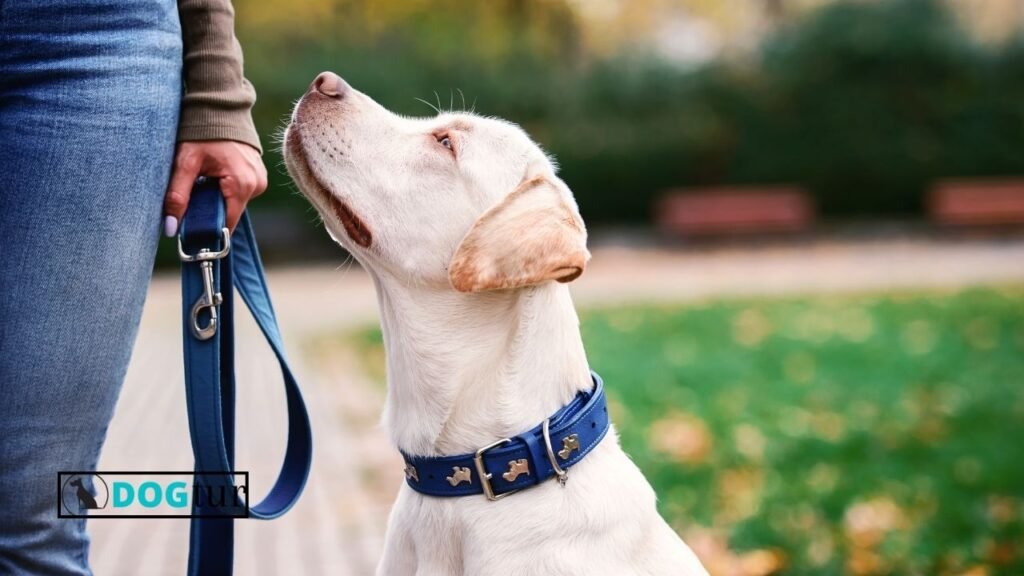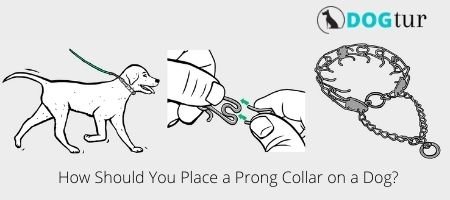Have you ever struggled with controlling your dog during walks, despite trying various collars and harnesses? Are you curious about how to properly use a prong collar to enhance training and safety for both you and your furry friend?
As pet owners, we all want the best for our dogs—whether it’s keeping them safe during outdoor adventures or ensuring they learn appropriate behaviors. The prong collar, often misunderstood and frequently debated, can be an effective training tool when used correctly. However, improper placement can lead to discomfort for your pet and may even hinder their training progress.

Using a prong collar can provide greater control and communication between you and your dog, but it’s crucial to understand how to place it correctly for maximum effectiveness and comfort. By learning the right techniques, you can set your dog up for success while fostering a positive training experience. This article will guide you through the essential steps to properly place a prong collar on your dog, ensuring both safety and effective training.
How Should You Place a Prong Collar on a Dog?
To properly place a prong collar on a dog, first ensure that the collar is the right size and has the correct number of links to fit comfortably around your dog’s neck without being too tight. Before attaching it, identify the specific direction the prong collar should face, as the prongs should point toward the dog’s neck.
Gently push the collar over your dog’s head and slide it down to the neck area. Once in position, you can adjust it to ensure a snug fit—just enough that it won’t slip off but not so tight that it restricts breathing or movement.
Always remember to associate the collar with positive experiences, and be mindful to use it as part of a broader training strategy rather than as a means of punishment. Regular checks for fit and comfort are important, as the dog’s neck may change over time.
Pinch Collars – Pinch collars (sometimes referred to as prong collars) are beneficial for certain dogs but shouldn’t be used on dogs that haven’t been trained with them. Prong collars are also famous as pinch collars. Well, prone collars have been around for a longer time now & they works on the best ever principle of positive punishment and negative reinforcement.
The collar is surely an important accessory that is used to train & teach leash manners to canines. If a dog has been trained and is accustomed to using one, a pinch collar can help the dog simply and fairly understand what the walker is communicating.

Using a prong collar incorrectly could really scar your dog. You want to make sure you’re working with a professional dog trainer so they can show you the correct way to use it.
A dog expert.
Apart from this, pet parents cannot use this collar randomly as proper knowledge is required to put on the collar on dogs. The prong collar comes with the learning curve that many pet parents have a tough time getting over. So, who should pet parents can place a prone collar on the dogs? It is necessary to know how this collar works & how it is designed.
As mentioned earlier, prong collar is designed in a certain way & has to be used properly. Therefore, it is important for pet parents to know the right way of placing the prong collar on dogs. Because when the prong collar is placed and used in a right way, it will be quite handy to train dogs.
What is the Best Prong collar for Dogs?
Herm SPRENGER Ultra-Plus Prong Dog Training Collar
Looking for an effective training solution for your dog? The Herm SPRENGER Ultra-Plus Prong Dog Training Collar is designed to aid in correcting behavior while ensuring comfort and safety. This collar features a solid fastener plate that provides a secure connection, allowing for peace of mind during training sessions.
With an adjustable design, you can customize the fit by adding or removing individual links, making it suitable for various neck sizes. Its stainless steel chrome plating not only adds durability but also gives it a sleek appearance, perfect for any dog.
Manufactured in Germany, this 3.0 mm prong collar is designed for efficacy and longevity. Weighing only 0.45 pounds, it is lightweight yet sturdy enough for effective training without causing discomfort to your furry friend. Enhance your dog training experience with the Herm SPRENGER Ultra-Plus Prong Dog Training Collar.

How a Prong Collar Works?
Firstly, we need to understand the behavior and actions of a puppy’s mother when her puppies are just a few weeks old.
When the puppy does something unacceptable in her eyes, the mother will physically bite her puppy on the back of their neck and may even pick them up this way to put them in their place! Their puppy may cry a little bit, but no lasting harm has been inflicted at all.
Always remember that prone is not designed to cause any kind of physical harm & inflict pain to dogs. Unlike chains or choke collars, a prong collar creates the right & equal amount of pressure all around the canine’s neck. Furthermore, this collar is designed in a specialized way to remain 3-4” away from the canine’s neck.
Once used properly, the collar will never harm and choke the dog. It is necessary that the collar should sit directly behind the dog’s ears & under the jaws. Because placing the prong collar other way around can make the collar useless.
Likewise, the part of the prong collar that directly hooks onto the chain should remain in upward direction, behind the pooch’s ears. It is necessary to familiarize the dogs with this collar by using positive reinforcement. Pet parents use different types of treats in order to encourage the dogs to sniff it while seeing it as an effective new object.
Find the Right Fit for Dogs
- Pet parents should know how much the canines weigh before buying the collar, because prong collar is designed and constructed on the principle of weight distribution
- Secondly, when the prong collar sits on the dog, it has to be snug around his neck
Two Important Comfort Tips
- Try using the prong collar along with metal rolled prongs because these move easily through the dog’s hair
- Do not use the collar with rubber rolled prongs because they can badly rub against his hair, causing pain or discomfort for the canine
In the end, I would like to say that the majority of pet parents think that a prong collar is extremely painful for the canines. Well, it is not the case as it is quite famous among canine trainers globally for all breed types due to its effectiveness.
A general tip about training is that it will not be only the prong collars that you have to take care of, you also need to have best dog food, best dog accessories and even so great exercises as well. Also take care of the shower routine of the dog.
Finding the Perfect Fit
One of the biggest mistakes that people make when using a prong collar is having it too loose. The collar must be snug enough to work correctly. If it is not fit correctly, the collar may create a pressure point on the dog’s front neck. By keeping the firm, the prong collar can be tightened equally around the dog’s neck to decrease the risk of any injury to the dog.
The size of the prong links should be appropriate for the size of your dog. The collar should sit high up on your dog’s neck, just behind their ears. The fit should be snug, so the prong links can’t shift to the front of your dog’s neck where they might pinch your dog’s trachea.
Are Prong collars bad for dogs?
Choke and prong collars are designed to punish dogs for pulling by inflicting pain and discomfort. They can cause serious physical and emotional damage to dogs and should never be used. The metal spikes of prong collars pinch the skin around dogs‘ necks when they pull and can scratch or puncture them.
Where to attach the leash
There are 2 rings on the prong collar – the Dead (D) ring and the Live (O) ring. Your leash should attach to the ‘D’ ring as this gives the dog some slack when they pull ahead.
Read More:
Conclusion
Placing a prong collar on your dog can be an effective tool for managing their behavior when used correctly. Remember, the key is to ensure that the collar fits comfortably yet securely and to use it in conjunction with positive reinforcement training techniques. Always observe your dog’s reactions and adjust the collar as needed to promote their well-being and comfort.
As you continue your training journey, focus on building trust and communication with your furry friend. A prong collar can be a valuable addition to your training toolkit, but it should never be a substitute for love, patience, and understanding.
With the right approach, you’ll not only enhance your dog’s training experience but also deepen your bond with them. We hope this guide has provided you with the insights needed to confidently place a prong collar on your dog. Happy training!


